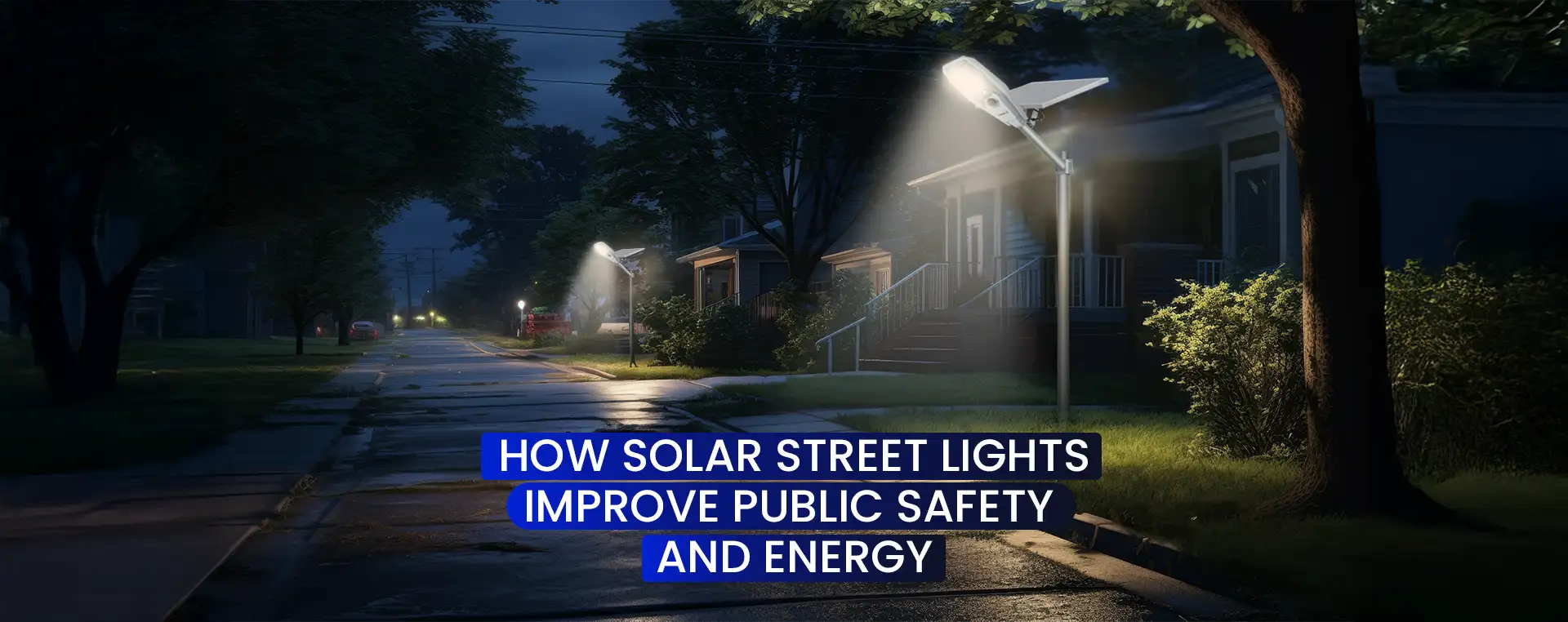In today's increasingly urbanizing world, sustainable energy use and public safety are at the top of city planners' agendas. One technology that nicely sits at the intersection of these two issues is solar street lighting. These streetlights, driven by renewable solar power, provide an inexpensive and green solution to conventional streetlights and a major boost to public safety.
Boosting Public Safety With Unreliable Lighting
1. Crime Deterrence
Solar-lit streets are shown to lower crime levels. Darkness frequently offers a guise for crime, but solar street lights provide constant lighting even in locations that are not connected to the electrical supply grid. By illuminating alleyways, public parks, residential streets, and public areas, these lights induce security among pedestrians, residents, and entrepreneurs alike.
2. Improved Night-Time Visibility
Enhanced visibility is as important for crime deterrence as it is for the avoidance of accidents. Solar streetlights shed light on walkways, roads, and intersections, making accidents or pedestrian injuries less probable. With modern advances in LED lighting and motion sensors, such lights change brightness levels in response to movement, which means optimal illumination when there is movement.
3. Assistance During Power Cuts
Unlike conventional grid-connected streetlights, solar streetlights function even during power outages. This ability to function is vital during blackouts or natural disasters when stable light is critical for evacuation, search and rescue efforts, as well as public security.
Driving Energy Efficiency and Sustainability
1. 100% Renewable Energy
Solar streetlights tap energy from the sun and, as a result, drastically cut the need for fossil fuels. With every installation comes reduced carbon emissions and an aide to the global fight against climate change.
2. Reduced Operating Expenditure
Solar LED streetlights, once installed, have few operating expenses. There is no electricity bill to pay, and with reduced maintenance needs as compared to conventional systems, municipalities and cities save time and money.
3. Independent of Power Grids
Solar light systems are not dependent on the central power grid, thus the best choice for off-grid or developing regions. This independence in energy encourages equal access to public infrastructure and illumination, irrespective of an area's current utility infrastructure.
4. Long-Term Investment
Contemporary solar street lights employ long-lasting materials and cutting-edge battery storage technologies that enable them to function for years with no or minimal loss of capacity. In the course of time, the cost savings due to electricity and maintenance costs become apparent.
Smart Integration for the Future
Modern solar street lighting is not just about illumination anymore. It can be made to be part of an IoT setup for remote monitoring, presence-based adaptive lighting, and even air quality or traffic sensors. This converts solar lighting into a piece of smart city infrastructure that both increases sustainability and urban intelligence.
Conclusion
Solar street lights are more than a green trend-they're a game-changing solution for safer, more energy-efficient public areas. Through an investment in solar lighting infrastructure, communities are able to cut back on carbon emissions, provide consistent safety lighting, and drive a cleaner, more sustainable future.
Whether you're a city planner, a business owner, or simply a concerned citizen, it's time to consider solar-powered street lighting not only as an option but a necessity.


